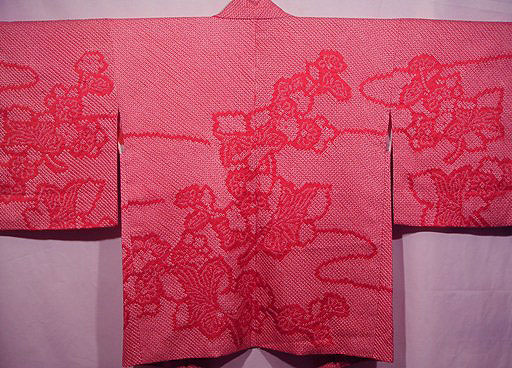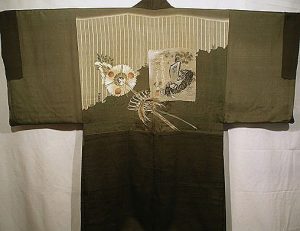Description
This is an elegant, hand woven Silk Haori or Topcoat dating from the early twentieth century. Although these garments served a practical use as overcoats for the original owners, it is the art that they display that makes each a unique and impossible to duplicate garment. This spectacular Raspberry Pink Silk Haori has its individually tied circles dyed in a darker raspberry red which gives it a brighter overall look. The lining has been hand stenciled which, while equally artistic and demanding in its creation, produces a smooth surface to the touch. This fabulous Haori could only have belonged to a Japanese Woman of high social standing in Japanese society.
This fabulous Haori exhibits the “Shibori” technique of tie dying that has been adapted to Japan in a very original manner. This method requires that each and every circle, that forms the background of this stunning Haori, be created by tying off with silk thread a small section of fabric about the size of one’s little fingernail into a balloon shape. The small dot pattern exhibited in this Haori is known as the “fawn-spot” tie dye design or “Kanoko Shibori.” The slight ripple effect, which is felt rather than seen, is a result of the binding off of each small dot. To add to the already masterful dying, the artist created an inner pattern of blossoms, leaves and flowing streams. This exquisite workmanship proclaimed that the dyer of this Haori was not only proficient at Shibori, but was also a master craftsman in order to tie off individually the darker circles of the pattern within the pattern. The theme of the Plum (“Ume”) blossoms and leaves is carried through onto the Silk Lining. The Plum is greatly revered for its beauty and for it strength. It is the first flower to appear before the end of winter and is thought to herald the coming of Spring. Thus, this glorious Top coat would have been worn in the early Spring (“Haru”).
The art of Shibori was a very highly refined art in Japan. It is an extremely labor intensive technique which, while it is still practiced in Arimatsu, a suburb of Nagoya, will soon be lost to Japan as only the elderly continue to produce this precious fabric.
A Certificate of Authenticity is included.
TTAC will personally pack and ship via UPS at company expense within the continental United States.









